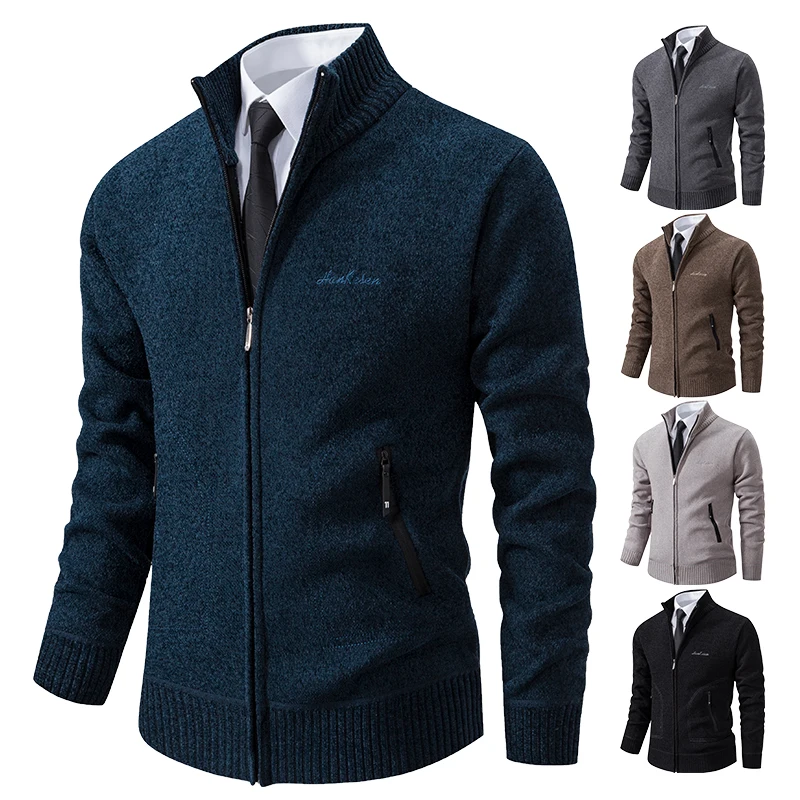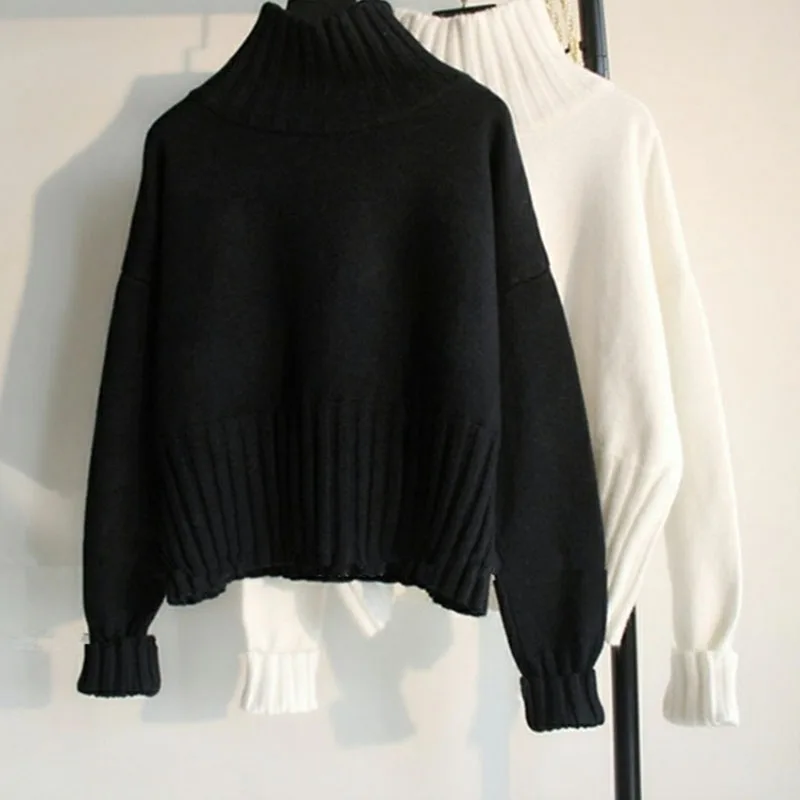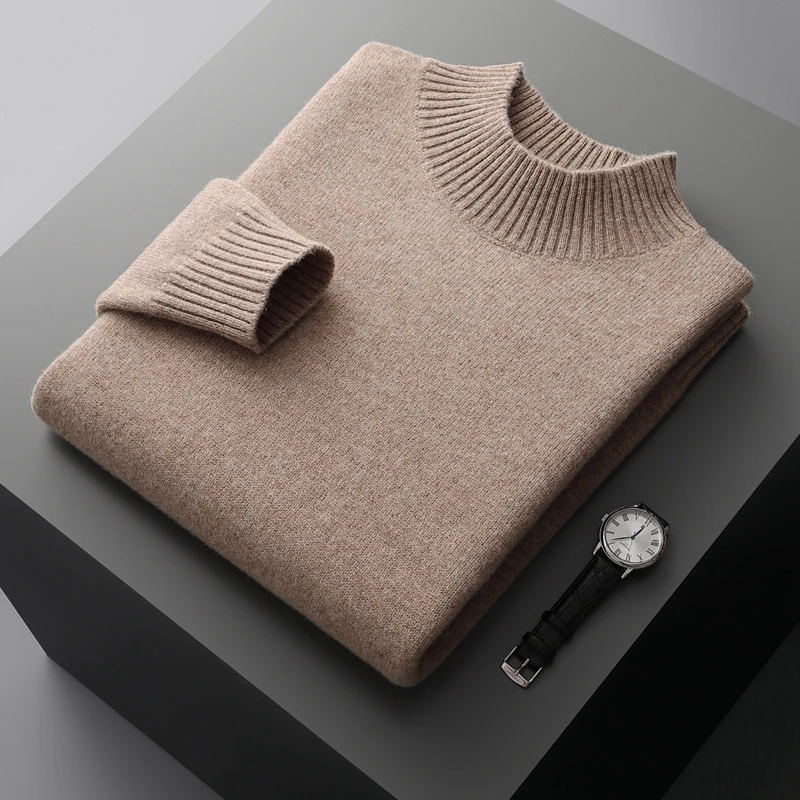What is Cashmere Ply? Demystifying the Basics
When exploring the world of luxury textiles, comprehensive cashmere yarn weight knowledge is essential for making informed decisions about your garments. At its core, cashmere ply refers to the number of individual yarn strands that are twisted together to create a single, stronger thread. This simple concept is fundamental to understanding cashmere quality and characteristics.
Think of cashmere ply like twisted rope – multiple strands combined provide greater strength than a single strand alone. During manufacturing, these individual strands are carefully twisted together to create yarns of varying thicknesses and strengths:
- 1-ply: A single strand of yarn, often used for delicate, lightweight pieces
- 2-ply: Two strands twisted together, common for lighter garments
- 3-ply: Three strands combined, offering moderate weight and warmth
- 4-ply: Four strands twisted together, providing substantial warmth and durability
- 6-ply and 8-ply: Multiple strands creating very thick, heavy, and warm fabrics
The creation of multi-ply yarns dates back centuries in textile manufacturing, representing one of the earliest methods to enhance fabric strength and warmth. Today, the choice between 2-ply vs 4-ply cashmere represents one of the most common purchasing decisions consumers face when selecting quality garments.
Understanding ply count provides the foundation for evaluating cashmere quality, but it’s just one part of a more complex picture that includes yarn thickness, knitting density, and raw material quality.
Common Cashmere Ply Variations and Their Uses
Different cashmere ply counts serve specific purposes, making them suited to particular garment types and seasons. The table below summarizes common ply variations and their typical applications:
| Ply Count | Typical Uses | Best Season | Characteristics |
|---|---|---|---|
| 1-ply | Ultra-lightweight scarves, summer tops | Spring/Summer | Delicate, sheer, minimal warmth |
| 2-ply | Lightweight scarves, thin sweaters | Spring/Fall | Light, breathable, moderate warmth |
| 3-ply | Versatile mid-weight garments | All seasons | Balanced weight, good drape |
| 4-ply | Standard sweaters, cardigans | Fall/Winter | Substantial warmth, durability |
| 6-ply+ | Heavy winter sweaters, outerwear | Winter | Maximum warmth, substantial weight |
It’s important to recognize that different garments naturally call for different ply counts. For instance, lightweight and heavyweight cashmere serve different purposes in your wardrobe. A lightweight summer top would feel uncomfortable and too warm in 6-ply, while a thin 2-ply sweater might not provide sufficient warmth for winter.
Most cashmere sweaters you’ll encounter are crafted from 2-ply or 4-ply yarn, striking a balance between comfort, warmth, and wearability. However, it’s crucial to understand that higher ply count doesn’t automatically equate to better quality. A well-made 2-ply sweater from superior raw materials can outperform a poorly constructed 4-ply garment made from inferior fibers.
The appropriate ply choice depends entirely on your specific needs, local climate, and how you plan to wear the garment. This makes understanding the relationship between ply and function essential for making satisfying cashmere purchases.
What is Cashmere Thickness? Understanding Yarn Count (Nm)
While ply count tells us how many strands are twisted together, yarn count measures the thickness or fineness of those individual strands. The metric numbering system (Nm) is the standard measurement for cashmere yarn thickness.
Yarn count might seem counterintuitive at first: higher Nm numbers indicate finer, thinner yarns. Specifically, the Nm value tells you how many kilometers of yarn you would get from one kilogram of that particular yarn. For example:
- Nm 30 yarn: 30 kilometers of yarn per kilogram (approximately 14,763 yards per pound)
- Nm 15 yarn: 15 kilometers of yarn per kilogram (approximately 7,382 yards per pound)
Notice that Nm 30 yields twice the length from the same weight as Nm 15, which means Nm 30 is a much finer, thinner yarn. Most quality cashmere falls within the range of Nm 15-40, depending on the intended use.
When choosing the right cashmere yarn weight, understanding this inverse relationship is crucial. Thinner yarns (higher Nm) create lighter, more delicate fabrics with fluid drape, while thicker yarns (lower Nm) produce more substantial, warmer garments with more structure.
The yarn count significantly impacts how a cashmere garment feels, drapes, and performs. Two sweaters could both be 2-ply, but if one uses Nm 30 yarn and the other Nm 15 yarn, they will feel dramatically different when worn.
Gauge in Cashmere Knitting: The Density Factor
Beyond ply count and yarn thickness, another crucial factor affecting cashmere garments is gauge – the measure of knitting density. Gauge refers to the number of stitches and rows per inch (or centimeter) in the finished fabric.
A cashmere sweater’s gauge is determined by:
* The thickness of the yarn used
* The size of knitting needles employed
* The tension applied during knitting
* The specific knitting technique used
Higher gauge numbers indicate more stitches per inch, resulting in a denser, often finer fabric. For example:
- Fine gauge: 7-8 stitches per inch (2.5-3 stitches per cm) creates a smooth, dense fabric
- Medium gauge: 5-6 stitches per inch (2 stitches per cm) offers balanced density and drape
- Low gauge: 3-4 stitches per inch (1-1.5 stitches per cm) creates a looser, chunkier texture
Luxury brands carefully specify gauge requirements to achieve consistent quality and appearance. Cable knit sweaters typically use specific gauge patterns to achieve their distinctive textured appearance, often with varying density throughout the same garment.
Gauge significantly impacts a garment’s insulating properties, durability, and feel against the skin. Even with identical yarn, a tightly knitted piece will be warmer and more wind-resistant than a loosely knitted one, demonstrating how construction technique can be as important as materials.
The Crucial Interplay: How Ply, Yarn Count, and Gauge Work Together

Understanding how ply, yarn count, and gauge interact is essential for truly comprehending cashmere quality. These factors work together rather than in isolation:
A 2-ply cashmere made with fine yarn (high Nm, like 40) can be lighter and more delicate than a 2-ply made with thicker yarn (low Nm, like 20), despite both being technically “2-ply.” Similarly, a loosely knitted 4-ply garment might feel less substantial than a tightly knitted 2-ply piece.
Consider these real-world examples:
* A lightweight summer sweater might use 2-ply yarn with high Nm (28-32) and a looser gauge for breathability
* A winter scarf might use 4-ply yarn with moderate Nm (20-24) and a tighter gauge for warmth
* A substantial cashmere turtleneck might use 6-ply yarn with lower Nm (16-20) and medium gauge for maximum insulation
Manufacturers carefully balance these three factors to achieve specific characteristics in the final product. For instance, a designer might compensate for using a lighter ply by decreasing the yarn count (using thicker individual strands) or increasing the knitting density (tighter gauge) to achieve the desired weight and warmth.
This interplay explains why simply checking the ply count alone provides insufficient information about how a cashmere garment will perform or feel. The relationship between these factors creates the unique character of each cashmere piece.
Warmth and Insulation: The Impact of Ply and Thickness
One of cashmere’s most prized qualities is its exceptional warmth-to-weight ratio, but how do ply and thickness affect this? Generally, higher ply counts and thicker yarns (lower Nm) provide greater warmth due to increased fiber volume and more trapped air pockets, which serve as insulation.
However, knitting density (gauge) can sometimes be more important than ply count in determining warmth. A tightly knit 3-ply cashmere sweater can provide comparable or superior insulation to a loosely knit 4-ply piece because the tighter construction traps more air and blocks wind more effectively.
What makes cashmere remarkable is its natural thermal efficiency. Quality cashmere provides 3-8 times more insulation than regular wool, depending on its construction. This is due to the unique structure of cashmere fibers, which feature microscopic air pockets that trap body heat.
For maximum warmth, cashmere wool cardigans often combine the best of both materials – cashmere for softness and wool for durability – in constructions that optimize insulation through strategic ply and gauge choices.
Climate considerations should guide your choices: those in milder regions might prefer 2-ply or 3-ply garments for versatility, while those in colder areas might benefit from 4-ply or higher for consistent warmth during harsh winters.
Durability and Longevity: Does More Ply Mean Better Quality?
A common misconception is that higher ply count automatically indicates better quality and durability. While multiple plies typically create stronger, more resilient yarn by distributing tension across multiple strands, the relationship isn’t strictly linear.
The perfect yarn weight for cashmere sweaters depends on multiple factors beyond just ply count. Raw fiber quality – particularly fiber length and diameter – often matters more than ply count for long-term durability. Long fibers (over 36mm) resist pilling and maintain structural integrity regardless of ply count.
Consider these quality factors beyond ply:
* Fiber length (longer fibers create stronger yarns)
* Fiber diameter (finer fibers, under 16 microns, provide softness without sacrificing strength)
* Twist level (tightly twisted yarns resist pilling better)
* Raw material purity (higher percentage of pure cashmere versus blends)
A tightly twisted 2-ply yarn made from long, fine fibers can significantly outperform a loosely twisted 4-ply yarn made from shorter fibers in terms of durability and resistance to pilling. This explains why some premium 2-ply garments maintain their appearance longer than lower-quality 4-ply alternatives.
Proper care ultimately affects longevity more than construction alone. Even the finest 8-ply cashmere will deteriorate quickly with improper washing, storage, or wear patterns.
Drape, Feel, and Softness: The Tactile Experience

The sensory experience of wearing cashmere is one of its most coveted aspects, and this is significantly influenced by ply and thickness. Lighter plies and finer yarns (higher Nm) create fabrics with exceptional drape that flow gracefully with movement. A 2-ply fine cashmere scarf made with Nm 28+ yarn drapes like liquid fabric, following body contours and creating elegant lines.
In contrast, heavier plies (4-ply and above) create more substantial fabrics with structure and presence. A 6-ply cashmere sweater has a weighty feel with less fluid movement but offers a luxurious substantiality that many associate with premium quality.
Yarn count often has more impact on hand-feel than ply count. The diameter of individual cashmere fibers (measured in microns) ultimately determines softness – regardless of how many strands are twisted together. Premium cashmere uses fibers under 16 microns in diameter, which feel soft against skin regardless of construction.
Judging cashmere quality by touch requires attention to several sensory elements:
* Initial coolness to the touch (a sign of pure cashmere)
* Quick warming when held (indicating good thermal properties)
* Springy resilience when gently stretched
* Smooth rather than fuzzy surface (excessive fuzziness often indicates shorter fibers)
Knitting technique also significantly affects texture independent of ply – creating everything from smooth, refined surfaces to intentionally textured patterns that enhance visual and tactile interest.
Weight and Price Considerations: The Cost of Comfort
There’s a direct correlation between ply count, yarn thickness, and garment weight. Since higher ply counts and thicker yarns require more raw cashmere fiber, they generally increase both the weight and cost of the finished piece.
For context, a standard 2-ply cashmere sweater typically weighs 7-9 ounces (200-250 grams), while a 4-ply version might weigh 10-12 ounces (280-340 grams). This additional material translates directly to production costs, which are reflected in retail pricing.
This weight difference isn’t just about cost – it also affects comfort and wearability. Lighter garments offer greater versatility for layering and year-round use, while heavier pieces provide more substantive warmth for cold weather.
When evaluating price-to-quality ratio, consider that men’s cashmere pullovers with similar appearances might vary significantly in price based on construction details that aren’t immediately visible. A seemingly simple 2-ply sweater made from superior-grade cashmere with longer fibers might justifiably cost more than a 4-ply made from standard-grade materials.
True value in cashmere comes from the appropriate match between construction and intended use, not simply from higher ply count or heavier weight. A perfectly constructed 2-ply summer sweater represents better value than an unnecessarily heavy 4-ply that’s too warm for its purpose.
Cashmere Wrap Sweaters, Women's Cashmere Pullovers
$75.89 Select options This product has multiple variants. The options may be chosen on the product pageCashmere Cable Knit Sweaters, Women's Cashmere Pullovers
Price range: $111.82 through $112.93 Select options This product has multiple variants. The options may be chosen on the product pageCropped Cashmere Sweaters, Women's Cashmere Pullovers
$155.77 Select options This product has multiple variants. The options may be chosen on the product pageOversized Cashmere Sweaters, Plus Size Cashmere Sweaters, Women's V-Neck Cashmere Sweaters
$136.87 Select options This product has multiple variants. The options may be chosen on the product page- Price range: $108.11 through $130.03 Select options This product has multiple variants. The options may be chosen on the product page
Striped Cashmere Sweaters, Women's Cashmere Pullovers
$139.68 Select options This product has multiple variants. The options may be chosen on the product page
Addressing Common Misconceptions About Cashmere Ply
Several persistent misconceptions about cashmere ply can lead to suboptimal purchasing decisions:
Misconception: Higher ply always means better quality
Reality: Quality depends primarily on raw fiber characteristics and construction methods. A superior 2-ply cashmere garment outperforms a mediocre 4-ply in both feel and longevity.
Misconception: Single-ply cashmere is always inferior
Reality: While single-ply constructions are generally more delicate, they can be appropriate for certain lightweight garments and often provide exceptional drape and softness.
Misconception: Ply count indicates season-appropriateness
Reality: While ply influences warmth, cashmere yarn weights from lace to super bulky encompass various construction methods that can make lower plies suitable for cooler weather and higher plies appropriate for transitional seasons, depending on gauge and yarn count.
Misconception: Higher ply means longer-lasting garments
Reality: Durability depends more on fiber quality, yarn construction, and proper care than on ply count alone. Poorly constructed 6-ply can pill more readily than well-made 2-ply.
Be wary of marketing that highlights only ply count while omitting other quality indicators. Some labels emphasize “8-ply luxury” while using shorter, coarser fibers that undermine the garment’s actual quality. True premium cashmere has fibers under 16 microns in diameter and exceeding 1.4 inches (36 mm) in length, regardless of ply.
Understanding these nuances helps you make informed decisions based on your specific needs rather than marketing claims alone.
Choosing the Right Cashmere for Different Needs

Selecting the right cashmere thickness for your specific needs involves considering your climate, intended use, and personal preferences:
For Lightweight and Layering Pieces:
* Look for 2-ply with fine yarn count (Nm 28+)
* Seek higher gauge knitting for smoother, more refined appearance
* Best for: scarves, spring/fall sweaters, layering pieces, warmer climates
* Benefits: Exceptional drape, breathability, versatility
For Medium-Weight Everyday Garments:
* Consider 3-ply or 4-ply with moderate yarn count (Nm 20-26)
* Medium gauge knitting balances warmth with flexibility
* Best for: versatile sweaters, year-round cardigans, business attire
* Benefits: Good balance of warmth and wearability, wrinkle-resistance
For Heavy Winter and Outerwear Pieces:
* Choose 6-ply or higher with substantial yarn (Nm 14-18)
* Lower gauge knitting creates loft and maximum insulation
* Best for: winter coats, heavy sweaters, cold-weather accessories
* Benefits: Maximum warmth, substantial feel, wind resistance
When balancing desired characteristics, consider that tighter knitting can compensate for lower ply in terms of warmth, while looser knitting can make higher plies more breathable. Your typical indoor environment also matters – well-heated spaces may call for lighter constructions even in winter months.
Beyond Numbers: Evaluating Cashmere Quality Firsthand
While understanding technical specifications helps inform your choices, hands-on evaluation remains invaluable when choosing the right cashmere ply. Here’s how to assess cashmere quality through tactile examination:
Perform the touch test: Premium cashmere feels cool to the touch initially, then quickly warms. It should feel soft and smooth without scratchiness.
Check elasticity: Gently stretch the fabric between your hands—quality cashmere should spring back to its original shape quickly. Poor recovery indicates inferior fiber quality.
Assess the knit: Look for even, consistent stitches without gaps or irregularities. Hold the fabric up to light—extremely transparent areas may indicate too-loose knitting or insufficient material.
Check for early pilling: Rub the fabric gently between your fingers for 30 seconds. Excessive fuzziness or pilling before purchase indicates poor fiber quality or inadequate twist.
Examine the finish: Quality cashmere has a subtle luster rather than an artificial shine. Extremely matte appearance can indicate over-processing.
Premium women’s cashmere pullovers should pass these tests regardless of ply count. Remember that cashmere quality exists on a spectrum, with fiber length, diameter, and processing methods often mattering more than construction details alone.
Red flags include excessive shedding, uneven texture, scratchy feel, or prominent seams that detract from comfort—regardless of how the label describes the ply count.
Care Considerations: How Construction Affects Maintenance
Different cashmere constructions require slightly different care approaches to maintain their quality over time:
For Finer, Lighter-Ply Garments:
* Hand wash with extra gentle handling to prevent stretching
* Dry flat with reshaping to maintain original dimensions
* Store folded rather than hung to prevent elongation
* Use sweater combs very gently and infrequently to address minor pilling
For Medium and Higher-Ply Garments:
* Hand washing remains ideal but can withstand slightly more agitation
* May retain shape better during wet processing
* Often resist pilling more effectively due to tighter twist
* Generally withstand more frequent wearing between cleanings
Regardless of construction, all cashmere benefits from:
* Using pH-neutral cashmere shampoo or mild wool wash
* Avoiding direct heat or sunlight when drying
* Storing clean with cedar or lavender to deter moths
* Giving the garment rest days between wearings to recover elasticity
With proper care, quality cashmere in any ply can last many years. The investment in appropriate maintenance tools and products pays dividends in extended garment lifespan, making even premium cashmere cost-effective over time.
Frequently Asked Questions About Cashmere Construction
Can you feel the difference between 2-ply and 4-ply cashmere?
Yes, there’s typically a noticeable difference in weight, warmth, and substance. 4-ply feels more substantial and often warmer, while 2-ply tends to feel lighter and more fluid. However, other factors like yarn count and knitting density can sometimes blur these distinctions.
Is single-ply cashmere always inferior?
No, single-ply isn’t inherently inferior, but it serves different purposes. It creates exceptionally lightweight, delicate fabrics ideal for certain applications like summer scarves or lightweight layers. Its appropriateness depends entirely on the intended use.
Why do some thinner sweaters cost more than thicker ones?
Thinner sweaters often require finer-grade cashmere with longer fibers, which costs more per weight than standard grades. The knitting process for very fine gauge garments also requires more specialized equipment and skilled labor, contributing to higher production costs.
How can you tell genuine multi-ply from falsely advertised cashmere?
Examining the cut edge of the fabric (at a seam or hem) sometimes reveals individual plies. Weight can also be indicative—genuine 4-ply is noticeably heavier than 2-ply of the same size. Ultimately, the hand-feel tests described in the evaluation section provide the most reliable assessment.
Does ply count affect how cashmere ages over time?
Ply affects aging primarily through its impact on durability. Higher-ply garments often maintain structural integrity longer, while very fine single-ply may become more delicate with age. However, fiber quality and proper care influence aging more significantly than ply count alone.
Understanding these nuances of cashmere construction allows you to make informed choices that match your specific needs, climate, and preferences. By looking beyond marketing claims to assess actual material quality and construction, you’ll make investments in cashmere pieces that provide lasting value and enjoyment.







